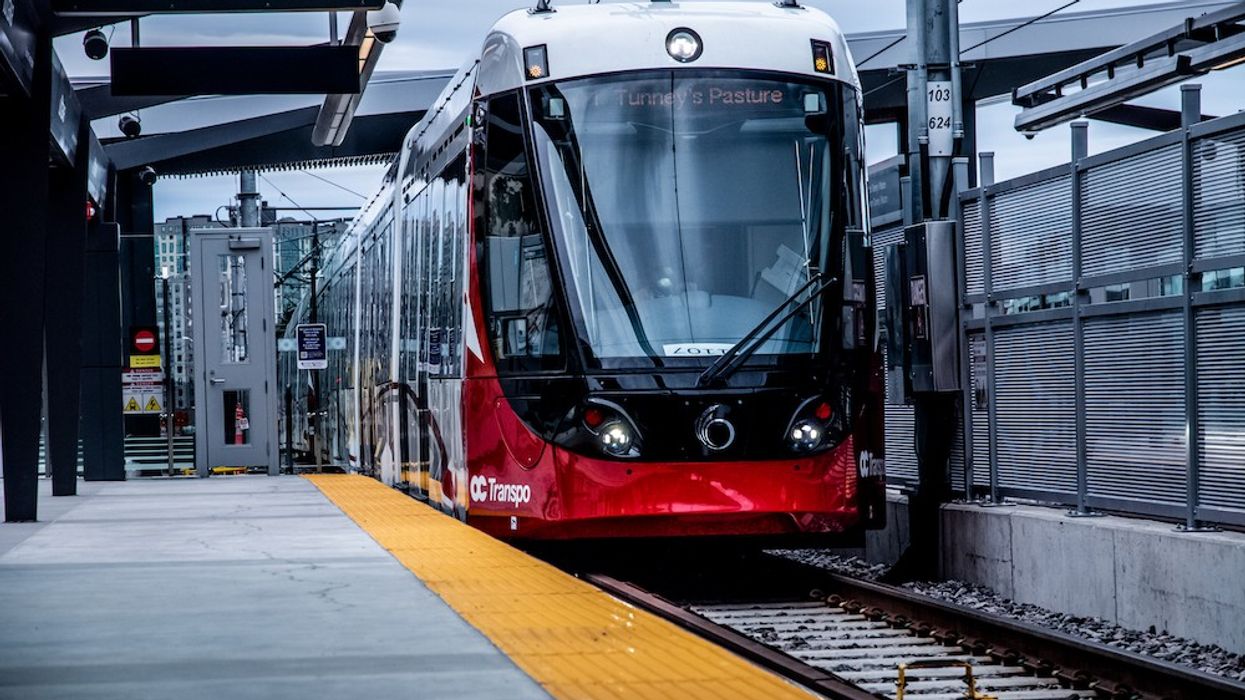What is it about public transit in Canada? From Toronto and Ottawa to Edmonton and Montreal, safe, convenient and reliable mass mobility eludes us. We just can’t seem to get it right.
It’s no surprise the overwhelming majority of Canadians choose to drive. But at a time when the catastrophic effects of the climate crisis are devastating the planet, getting people out of their cars is more crucial than ever.
In the nation’s largest city, the Toronto Transit Commission, once lauded as “The Better Way,” is trapped in a downward spiral of deteriorating service, declining revenues, deferred maintenance and delayed construction. Little wonder passengers are deserting the TTC in droves. Who can blame them? Getting around Ontario’s ridiculously congested capital by bus, streetcar or subway has turned into an ordeal of wasted time, frustration and, thanks to a recent series of deadly random attacks, fear.
Where to start? The Eglinton Crosstown line is as good a place as any. Under construction since 2011, the 25-stop, 19-km LRT is three years behind schedule and still has no opening day. Oh yes, it’s also $1B over budget. To be fair, the blame here rests with Metrolinx, the much-despised provincial transit agency, not the TTC. As Toronto City Councillor Josh Matlow rightly pointed out, the project has been “completely mismanaged.”
Then there’s the Scarborough Rapid Transit Line, a decade past its best-before date and due to close permanently in November. So when a carriage derailed on July 24, sending five passengers to hospital, it was yet another reminder of how the City and Province have sat on their hands for years as the SRT slowly but surely crumbled. To make matters worse, its (still unfunded) replacement won’t be operational until at least 2030. In the meantime, riders will have to rely on shuttle buses. Always crowded and always late, they are a commuter’s worst nightmare.
In Toronto’s east end, TTC construction on major streets including Broadview Avenue and Queen Street East has left thousands at the mercy of a makeshift replacement bus routes that confuse even bus drivers.
In short, Toronto transit is a disaster. But it is a disaster of our own making; needless to say, the causes are crass political interference and institutional mismanagement.
Things are almost as bad in Ottawa. The national capital’s Confederation Line has never been reliable. Sometimes it works, sometimes it doesn’t. Since opening in 2019, the much-troubled LRT has derailed twice. A scathing public inquiry report, released in November, 2022, blamed the fiasco on senior municipal officials and the SNC-Lavalin led consortium that designed and built the line. Justice William Hourigan, who presided over the inquiry, found “persistent failures in leadership, partnership and communications…” as well as “egregious violations of the public trust.”
If that weren’t enough, on July 17, light rail service was cancelled yet again after axle problems were discovered during routine maintenance. As a result of this chance discovery, service won’t restart until mid-August at the earliest.
And so it goes.
In Montreal, all eyes were on the city’s brand new light transit line, Reseau express metropolitain (REM), when it opened on July 30. Sadly, things didn’t go quite as expected. Within hours of being launched, a switching snafu forced total closure of the system for 45 minutes during the morning rush hour. Later, a second switching failure caused yet another shutdown. As usual, shuttle buses were pressed into service leaving commuters waiting and walking.
More significant was the fact the express is a for-profit operation planned and constructed by a consortium with a minimum of input from government or communities. Perhaps looking to avoid Toronto’s experience, the REM was conceived to get shovels into the ground as quickly as possible. Even with the unusual powers granted by the Quebec government – freedom from lawsuits, minimal political interference, for-profit private ownership – construction lasted seven years.
It’s too early to tell whether the experiment will pay off. In the meantime, the challenge is to make the system reliable, something that, so far, has eluded its builders.
Aside from a general lack of convenience, the big issue for Edmonton Transit System (ETS) users is random violence. It has reached the point where police have warned riders “to be extremely cautious on our transit system… because there are many people who are in difficult situations… and very angry….”
According to the cops, “everything went downhill” in 2021 when a City anti-loitering bylaw was “deleted.” Complaints grew from 1,344 in 2017 to 6,693 in 2021. And by 2022, crime on the ETS increased 53%, 70% of it random.
Of course, Edmonton isn’t alone. In Toronto, violence on the TTC has also become a huge issue. Last year, there were almost 1,100 random attacks on passengers, some leading to murder. Clearly, public transit has become a magnet for the homeless, the addicted and the mentally ill. It is a good place to hit up and get out of the cold and the heat.
More fundamentally, however, public transit is widely viewed as a service for those who must manage getting around without a set of wheels of their own. It’s seen as temporary, a stopgap measure at best and a step along the way to a car of one’s own. This was stated in blunt terms in a 2016 memo from former Toronto Mayor John Tory to his budget committee chair, Gary Crawford. “Transit,” His Worship explained, “provides a means of getting around for people who can’t afford a car.”
As long as attitudes like this prevail in Canada, public transit doesn’t stand a chance. And as Enrique Penalosa, the celebrated former mayor of Bogota, famously observed, “An advanced city is not one where even the poor use cars, but rather one where even the rich use public transit.”


















